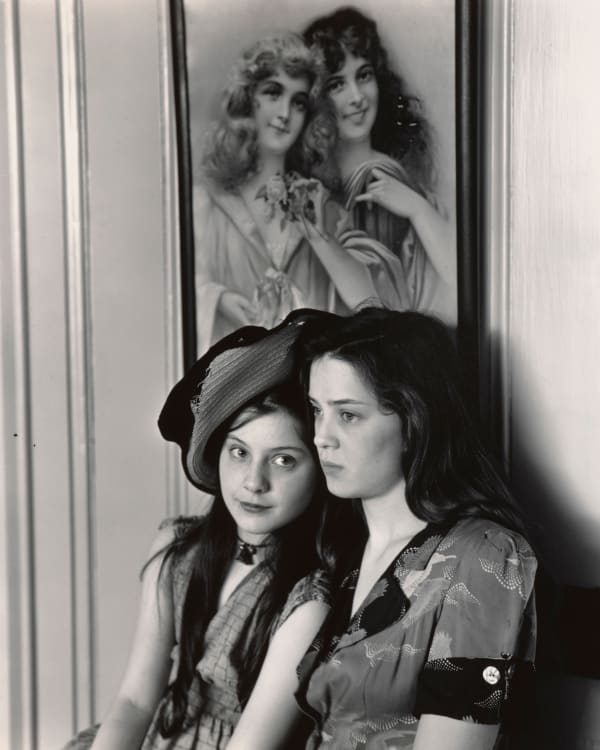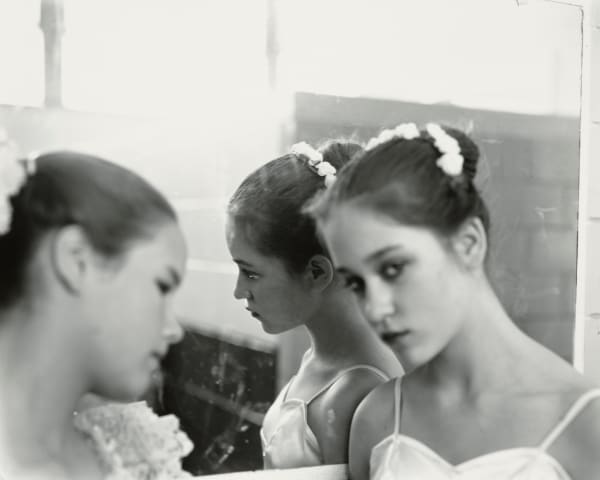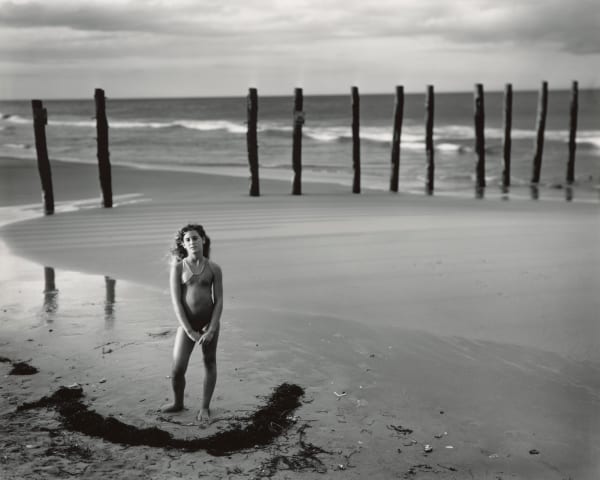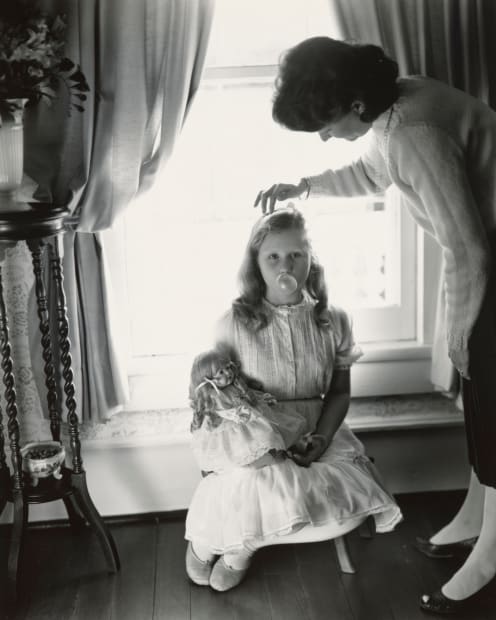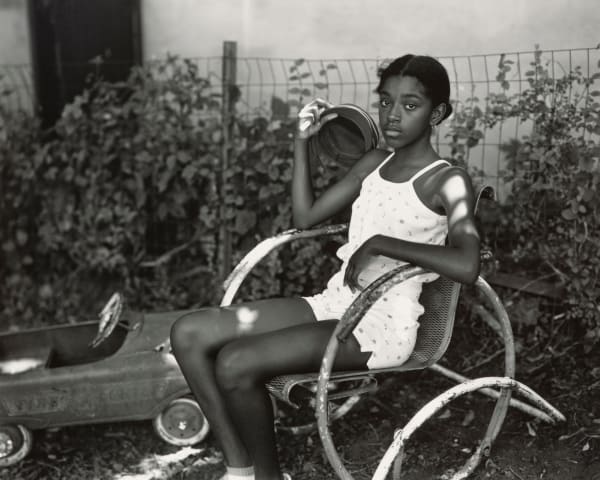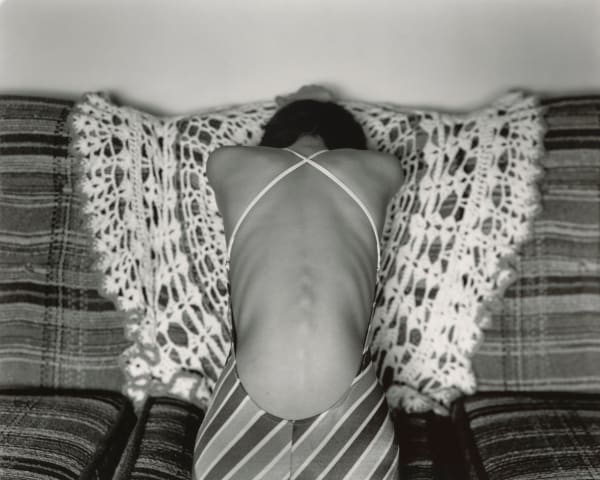-

-
Biography
Born in Lexington, Virginia, Mann began to study photography in the late 1960s, attending the Ansel Adams Gallery’s Yosemite Workshops in Yosemite National Park, California and the Putney School and Bennington College, both in Vermont. She received a BA from Hollins College, Roanoke, Virginia, in 1974, and an MA in creative writing the following year. At a moment when many other photographers were creating large-scale color prints, Mann looked to photography’s past, investigating the visual and metaphorical potential of employing nineteenth-century technologies. She has long used an 8 x 10 bellows camera and has explored platinum, bromoil, and wet-plate collodion processes for making prints.
Mann’s large-scale exhibition, A Thousand Crossings, further explored the complex cultural identity of the American South, Mann’s place of origin—a region rich in literary and artistic traditions but troubled by its often-painful history. The exhibition, which she began working on in 2006, debuted at the National Gallery of Art, Washington, DC in 2018 and traveled extensively in the United States and abroad.
A Guggenheim fellow and a three-time recipient of the National Endowment for the Arts fellowship, Mann was named “America’s Best Photographer” by Time magazine in 2001. In 2021, she received the Prix Pictet and was inducted into the International Photography Hall of Fame. She has been the subject of two documentaries: Blood Ties (1994), which was nominated for an Academy Award, and What Remains (2006), which premiered at Sundance and was nominated for an Emmy for Best Documentary in 2008. Mann’s Hold Still: A Memoir with Photographs (Little, Brown, 2015) received universal critical acclaim; it was named a finalist for the 2015 National Book Awards and in 2016 won the Andrew Carnegie Medal for Excellence in Nonfiction.
-
At Twelve
“What knowing watchfulness in the eyes of a twelve-year-old… at once guarded, yet guileless. She is the very picture of contradiction: on the one hand diffident and ambivalent, on the other forthright and impatient; half pertness and half pout. Impossibly, she is both artless and sophisticated, a child and yet a woman.”
- Sally Mann from At Twelve (1988)
-
Twelve is an age of expanding horizons, enriched by social experiences and shared connections. It is also a transitional period, navigating the delicate space between childhood and adulthood. The At Twelve portraits reveal this delicate balance, portraying both the innocence of youth and the yearning for maturity. The young women in these images are relatives and daughters of friends, but also, others in her small Virginia community who trusted the artist to capture their individual spirit with grace and honesty. Taken nearly forty years ago, these images continue to hold relevance today, bridging the past and present in their exploration of this transformative stage in a young woman’s life.
-

Sally Mann
Lisa and Jenny on Car (At Twelve), 1983-19858 x 10 inch silver gelatin print
Edition of 25 -

Sally Mann
Robin and Jessie, Atlanta T-shirt (At Twelve), 1983-19858 x 10 inch silver gelatin print
Edition of 25 -

-

Sally Mann
Robin and Jessie Swinging (At Twelve), 1983-19858 x 10 inch silver gelatin print
Edition of 25 -

Sally Mann
Rosie and Violin (At Twelve), 1983-19858 x 10 inch silver gelatin print
Edition of 25 -

-

Sally Mann
Katie in Bedroom (At Twelve), 1983-19858 x 10 inch silver gelatin print
Edition of 25 -
Landscapes
"Because of this history of defeat and loss, we Southerners embrace the Proustian concept that the only true paradise is a lost paradise. Like Proust, we know love emerges from loss and becomes memory, and that memory informs and enriches art. I have been photographing the South for thirty-six years, finding memory, love, and occasionally, paradise in the uniquely radical Southern light."- Sally Mann from Deep South -

Sally Mann
Georgia Untitled (Little Branch), 199640 x 50 inch tea-toned silver gelatin print
Edition of 10 -

-

Sally Mann
Georgia, Untitled (Fort Pulaski), 199640 x 50 inch tea-toned silver gelatin print
Edition of 10







